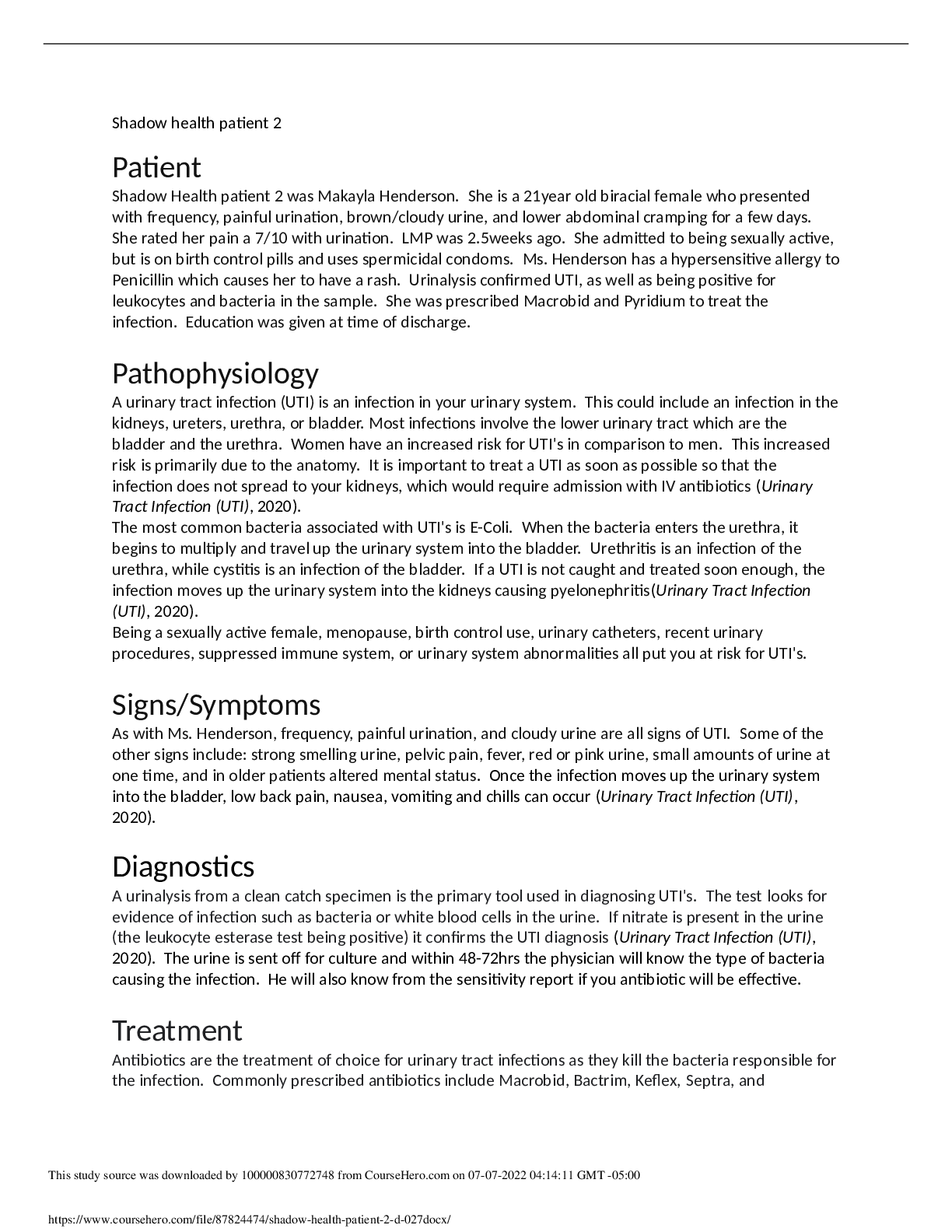Mathematics > CASE STUDY > Dosage Calculations for Nursing Students B Wojcik (All)
Dosage Calculations for Nursing Students B Wojcik
Document Content and Description Below
Introduction Imagine that you just moved to a new city and needed to know how to get around. Would you rather be handed a long list of detailed instructions on how to drive between all the different ... points in the city, or be handed a map? This book takes the approach that it is easier to learn to read a map once than to memorize a myriad of different instructions. After learning a few simple concepts, you will be able to quickly set up and solve pharmacy calculation problems without resorting to notes or formulas. The book is divided into three chapters. Auxiliary Subjects: Chapter I consists of topics which are important in forming a well-rounded knowledge of pharmacy calculations. Topics covered are: • Rounding Numbers • Roman Numerals • The Metric System • Scientific Notation • Significant Figures • Percent Error • The Apothecary/Avoirdupois/Household Systems Dimensional Analysis and Ratio Proportion: Chapter II is the most important chapter as it covers about 80% of the calculations encountered in pharmacy. All problems in this chapter can be solved using one easy method. Topics covered are: • Dimensional Analysis vs. Ratio Proportion • Unit Conversions • Dosage Calculations • IV Flow Rate Calculations • Percent/Percent Strength/Ratio Strength Calculations • Milliequivalent Calculations Concentrations and Dilutions: Chapter III will teach you how to solve these problems easily and understand the basics of the problem. Topics covered are: • The Alligation Method • Preparing a Solution Using Two Different Strength Solutions • Preparing a Solution from a Stock Solution and a Diluent • Calculating the Percent Strength of a Mixture • Powder Volume Calculations • Serial Dilution General Terminology Used in this Book: • Number: Includes integers, decimal numbers, and fractions. Integer: All positive and negative whole numbers and zero. Examples: -4, -3, 0, 2, 25 Decimal Number: A number which includes a decimal point. Examples: 25.3, 0.05 Fraction: A number represented as a/b where a and b are both integers, with the exception that b cannot be 0. Examples: 1/2, 3/4, 7/8, -1/2 • Unit: Unit of measurement. Examples: mg, mL, kg, L. A Few Important Notes: • Always include all units of measurement (mg, g, L, mL, etc.) in the calculations. The units are the most important part of the calculation. The numbers only go along for the ride. • Set the calculations up mathematically correct. 0.25 X 100% = 25% not 0.25 X 100 = 25% • Use a space between the number and the unit. 5 mL not 5mL • Always use leading zeros on decimal numbers which are less than 1. 0.5 mg not .5 mg. • Always avoid trailing zeros after whole numbers. 5 mg not 5.0 mg • Use mcg for microgram, not µg, as µg can be mistaken for mg. • Definitions of terms in this book are limited in scope to the practice of pharmacy. You won’t get a detailed technical definition of electrolytes, only that they are ions important to the function of the body. Most of these topics are covered in my YouTube videos. YouTube.com/c/BradWojcikPharmD Feel free to email me at brad.wojcik@gmail.com with questions or comments. [Show More]
Last updated: 2 years ago
Preview 1 out of 86 pages

Buy this document to get the full access instantly
Instant Download Access after purchase
Buy NowInstant download
We Accept:

Reviews( 0 )
$10.00
Can't find what you want? Try our AI powered Search
Document information
Connected school, study & course
About the document
Uploaded On
Sep 08, 2021
Number of pages
86
Written in
Additional information
This document has been written for:
Uploaded
Sep 08, 2021
Downloads
0
Views
73














